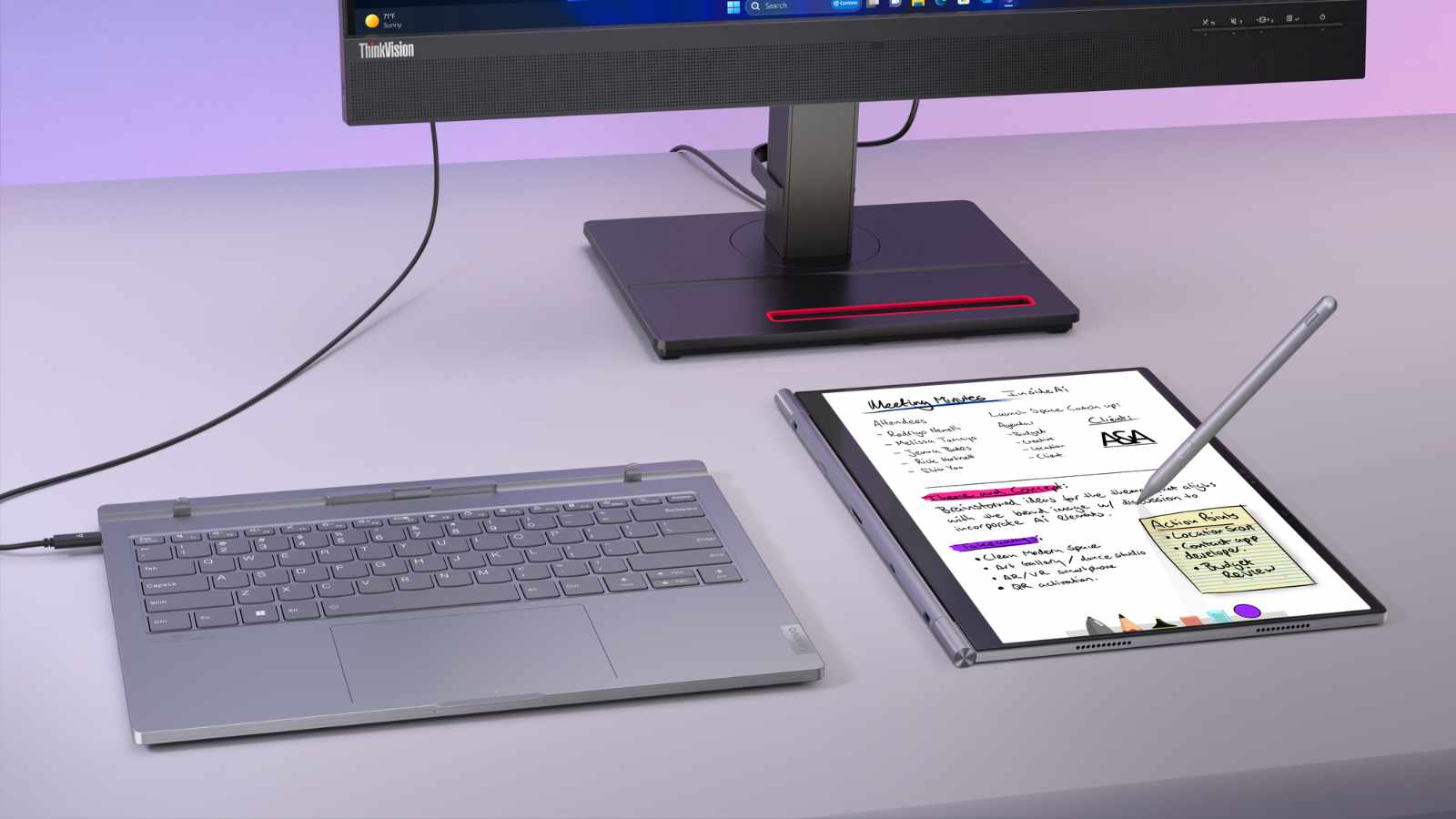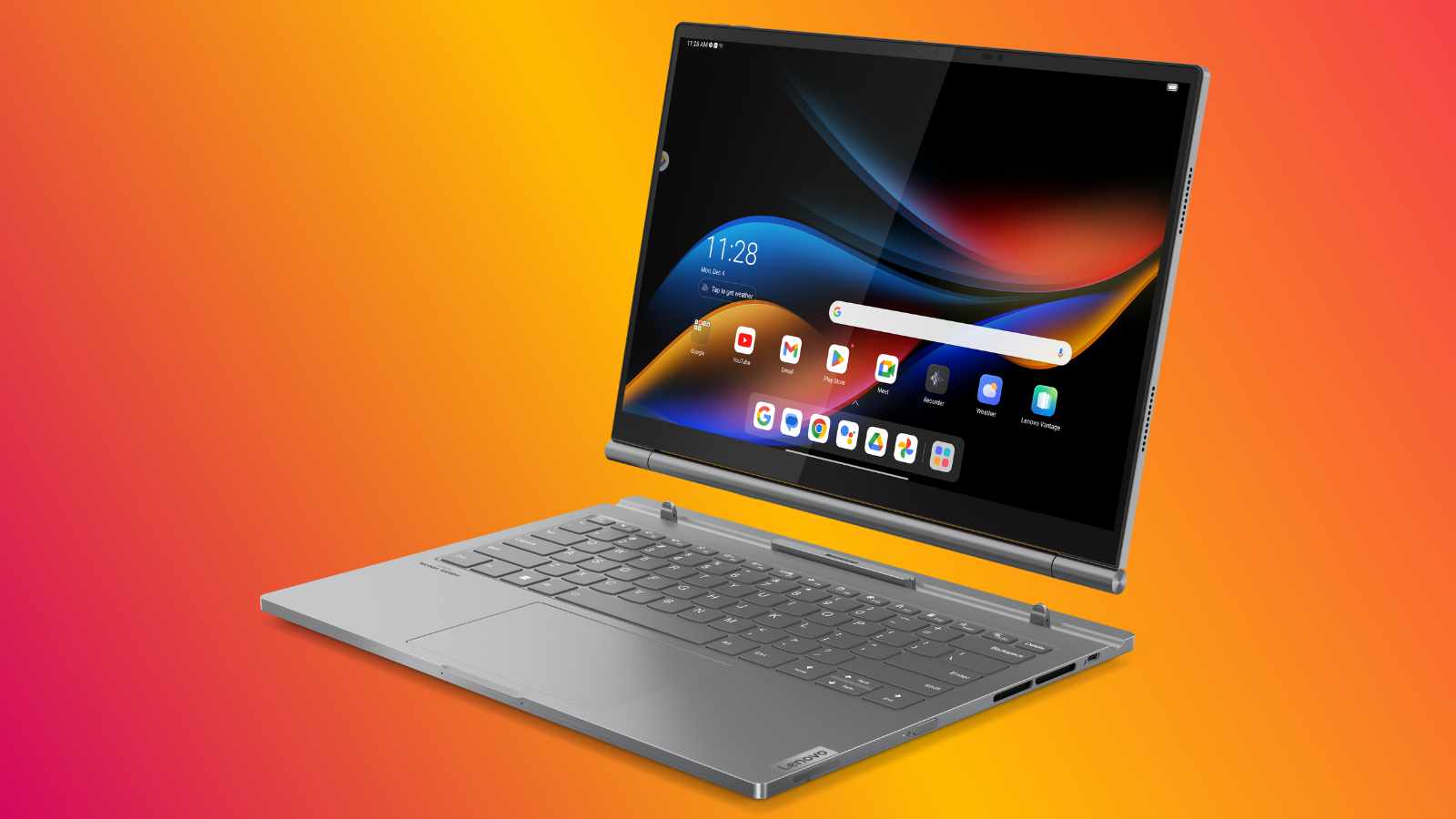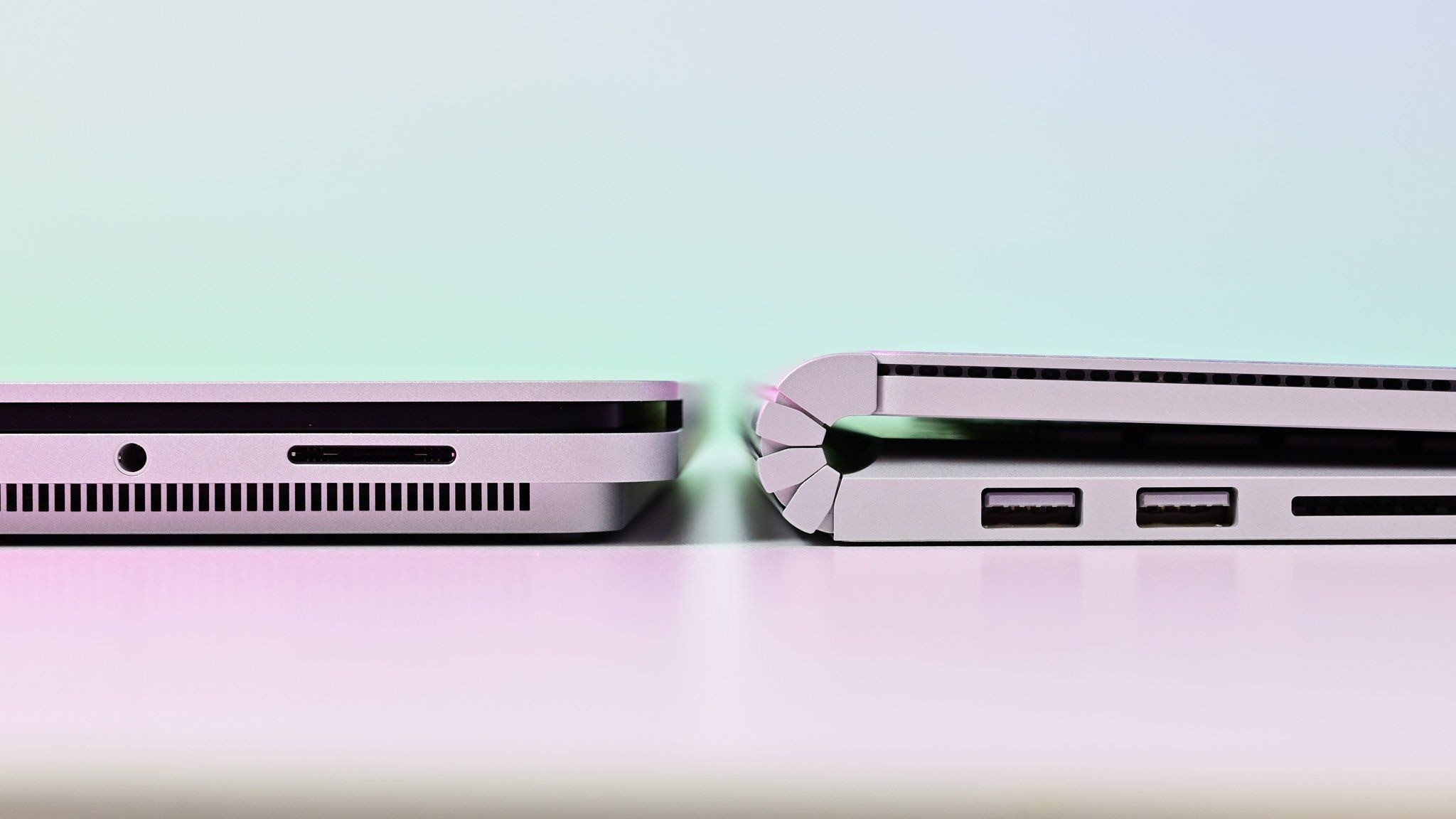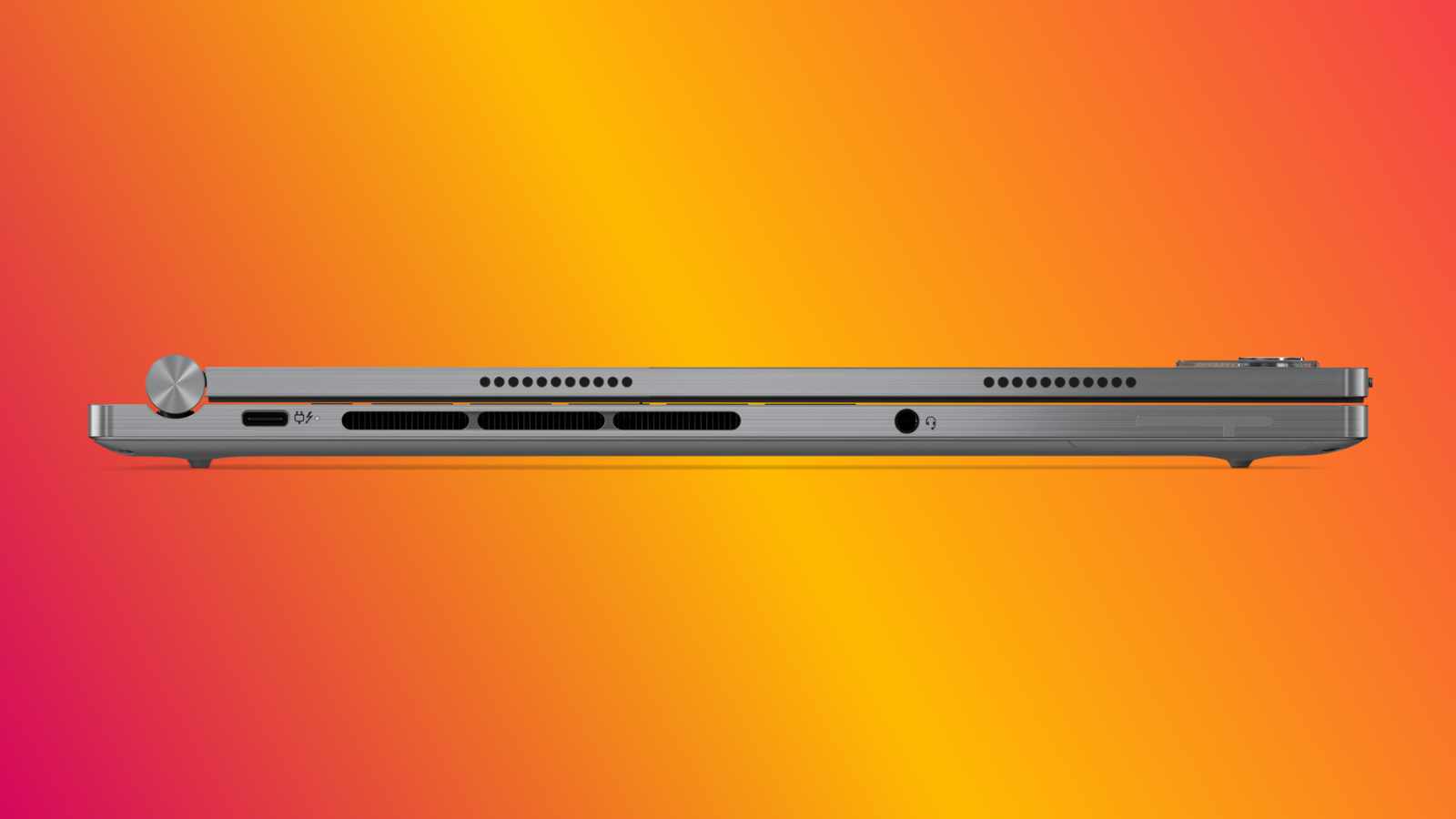Microsoft's Surface Book and an Android tablet had a baby. Meet the Lenovo ThinkBook Plus Gen 5 Hybrid.
The ThinkBook Plus 5 is a Windows PC and an Android tablet put together, quite literally.

What you need to know
- Lenovo announced the ThinkBook Plus Gen 5 Hybrid this week at CES 2024.
- The system combines a Windows laptop with a detachable display that is a fully functional standalone Android tablet.
- The ThinkBook Plus Gen 5 Hybrid's Windows base can be used independently from the Android tablet, as long as you have an external monitor.
- The ThinkBook Plus Gen 5 Hybrid should ship in Q2 2024 with a starting price of $1,999.
The image above is not a PC that's been torn in half, at least not on accident. It's a new PC/tablet from Lenovo called the ThinkBook Plus Gen 5 Hybrid. It's a unique system that is a full Windows laptop with a screen that's a fully functioning standalone Android tablet.
Sure, you can run Android apps on Windows. You can use Windows on Android tablets through a Cloud PC. Heck, you can even access a Windows Cloud PC from certain phones when connected to an external display. But why do all that when you can have an Android tablet attached to a Windows PC?
CES is known for its whacky and wild devices. Heck, Lenovo also showed off a prototype mouse and keyboard that charge by winding them up like a toy, which PCMag covered. But the ThinkBook Plus Gen 5 Hybrid isn't a concept device. You should be able to buy it in Q2 2024, though the unique system will set you back at least $1,999.
Our colleagues at Android Central went hands-on with the Lenovo ThinkBook Plus Gen 5 Hybrid. Below, I'll run through the device from the perspective of a Windows user.
A true 2-in-1

Lenovo took the concept of a 2-in-1 to the next level with the ThinkBook Plus Gen 5 Hybrid. Usually, the term 2-in-1 refers to a device that can convert into different postures, such as tablet mode and laptop mode. But the ThinkBook Plus Gen 5 Hybrid is, quite literally, two devices in one.
When the screen and base are connected, the ThinkBook Plus Gen 5 Hybrid is a Windows laptop. The detachable screen is a standalone Android tablet. The Windows PC and Android tablet can be used separately as well, though you'll need a second display such as an external monitor to use the ThinkBook Plus Gen 5 Hybrid with the screen detached.
The Surface Book dream lives on... kind of

Microsoft shifted away from the Surface Book family in favor of the Surface Laptop Studio. While the newer device is flexible and unique in its own way, it's not as wild as the Surface Book. I remember when Microsoft unveiled the first Surface Book and blew my mind. The power of a full Windows PC that could split into a dedicated tablet? That was the dream, or so it seems.
All the latest news, reviews, and guides for Windows and Xbox diehards.
Sadly, the Surface Book struggled in several areas. Most notably, Windows is not as good of a tablet operating system as iOS or even Android. The detachable design also limited what Microsoft could do in terms of specs.
The Lenovo ThinkBook Plus Gen 5 Hybrid carries on the spirit of detachable computing but with a different approach.
ThinkBook Plus Gen 5 Hybrid specs

To power the standalone systems that make up the ThinkBook Plus Gen 5 Hybrid, Lenovo had to use two sets of processors. The Windows PC base runs on an Intel Core Ultra 7 processor, has 32GB of RAM, and has a 1TB SSD. The base has a 75Whr battery as well, which is quite respectable for a laptop this size.
The Android tablet of the device runs on a Qualcomm Snapdragon 8 Plus Gen 1. It has a smaller 38Whr battery, but that should be fine for tablet use. The tablet has 12GB of RAM and 256GB of storage. The Snapdragon 8 Plus Gen 1 inside sips power when compared to many x86 processors seen in laptops.
The tablet portion of the ThinkBook Plus Gen 5 Hybrid has a 2.8K OLED display. The entire tablet weighs about 1.7 lbs, which is only slightly heavier than the 12.9-inch iPad Pro (1.5 lbs).
| Specs | Windows laptop | Android tablet |
|---|---|---|
| CPU | Intel Core Ultra 7 Processor | Qualcomm Snapdragon 8+ Gen 1 |
| OS | Windows 11 | Android 13 |
| Memory | 32GB LPDDR5x | 12GB LPDDR5x |
| Storage | 1TB PCIe Gen 4 SSD | 256GB UFS 3.1 |
| Graphics | Intel Arc GPU | Qualcomm Adreno 730 |
| Display | 14-inch 2.8K OLED touch, DCI-P3 100% | Same |
| Audio | 2x 2W Harman Kardon speakers | 4x 1W super-linear speakers |
| Battery | 75Whr | 38Whr |
| Security | Fingerprint reader; Kensington Nano lock | Camera (Face Unlock), camera shutter |
| Connectivity | 2 x USB-C (Thunderbolt 4), 3.5mm jack, Wi-Fi 6E, Bluetooth 5.2 | 1 x USB-C, Wi-Fi 6E, Bluetooth 5.3 |
| Dimensions | 313.5 x 234.5 x 9.4mm; 970g/ 2.14lb. | 313.5 x 224 x 6.6mm; 785g/ 1.73lb. |
Room for improvement

The ThinkBook Plus Gen 5 Hybrid is certainly intriguing, but I'd love to see some refinement from Lenovo before the device launches later this year. The current version of the device can show Android apps in a Picture-in-Picture window when in laptop mode, but apart from that, there's little interaction. For example, you have to share files manually between the Android and Windows parts of the system.
I imagine there are technical hurdles to overcome when integrating two operating systems. Microsoft has embraced Android over the years, including shipping apps and regularly improving the Windows Subsystem for Android. Perhaps Microsoft and Lenovo could work together to improve interoperability on devices like the ThinkBook Plus Gen 5 Hybrid.

Sean Endicott is a news writer and apps editor for Windows Central with 11+ years of experience. A Nottingham Trent journalism graduate, Sean has covered the industry’s arc from the Lumia era to the launch of Windows 11 and generative AI. Having started at Thrifter, he uses his expertise in price tracking to help readers find genuine hardware value.
Beyond tech news, Sean is a UK sports media pioneer. In 2017, he became one of the first to stream via smartphone and is an expert in AP Capture systems. A tech-forward coach, he was named 2024 BAFA Youth Coach of the Year. He is focused on using technology—from AI to Clipchamp—to gain a practical edge.
